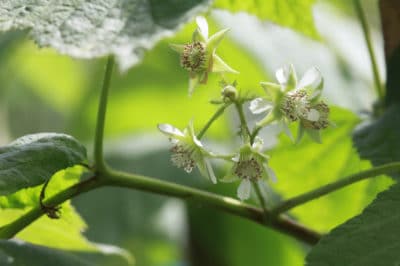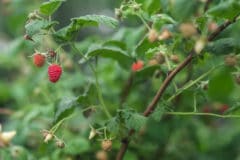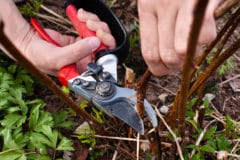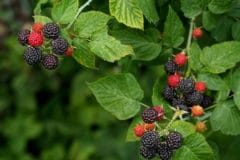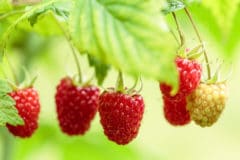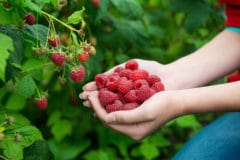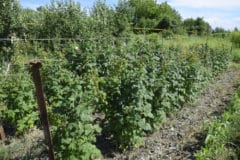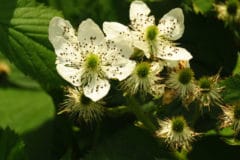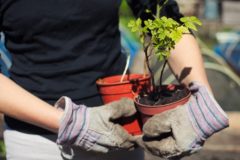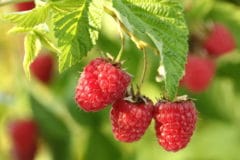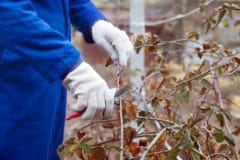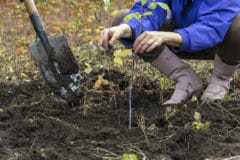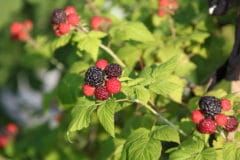Raspberry Flower Facts
In the spring, raspberry canes will multiply and grow 6 feet or more tall. Compound leaves containing three or more toothed leaflets grow on the canes. Clusters of flowers bloom among the leaves in late spring to early summer. Other interesting facts to know about raspberry flowers are:
- Clusters of flowers contain as many as 10 flowers.
- Flowers are flat-topped inflorescences called cymes.
- Flowers measure up to .39 inches (1 cm) in diameter.
- Flowers are white to pink in color.
- Flowers are self-fertile.
- Flowers have multiple ovaries that produce 100-120 druplets.
- Flowers are a great source of nectar for honeybees.
- Bees are responsible for 90-95% of the pollination of raspberry flowers.
- Flowers have five petals.
Fruiting Cycle of Summer-bearing Raspberries
Spring planted bare-root canes will quickly grow multiple tall canes covered with leaves, but will not develop flowers the first season. No flowers mean no raspberries during the first summer. The leaves will die and fall off the canes. The first year canes (primocanes) will overwinter and new canes will emerge among them in the spring.
The previous year’s primocanes become floricanes that are capable of producing flowers and fruit. Among the leaf covered floricanes, flowers appear, followed by berry formation. Summer-bearing raspberry picking season is midsummer to late summer depending on the location, weather, and growing conditions.
Fruiting Cycle of Everbearing Raspberries
The fruiting cycle of everbearing (fall-bearing or primocane-bearing) raspberries is different than summer-bearing raspberry varieties. During the first summer of growth, flowers will appear only on the primocanes tips. Expect flowers to form in July for most locations. The first year’s crop will be small.
During the second summer of growth, flowers will form early on the lower portions of the canes that fruited the previous year. These primocanes are now called floricanes. Berries for a summer harvest will form on these flowers. These canes will die when the fruit production is finished.
Growing among the floricanes are primocanes that will flower and bear the second crop that produces fruit until the first frost. The fruit develops on the tips of the primocanes in the fall. This crop is usually larger than the summer crop. If two crops are desired, everbearing raspberry bushes must be pruned as a summer-bearing raspberry bush.
